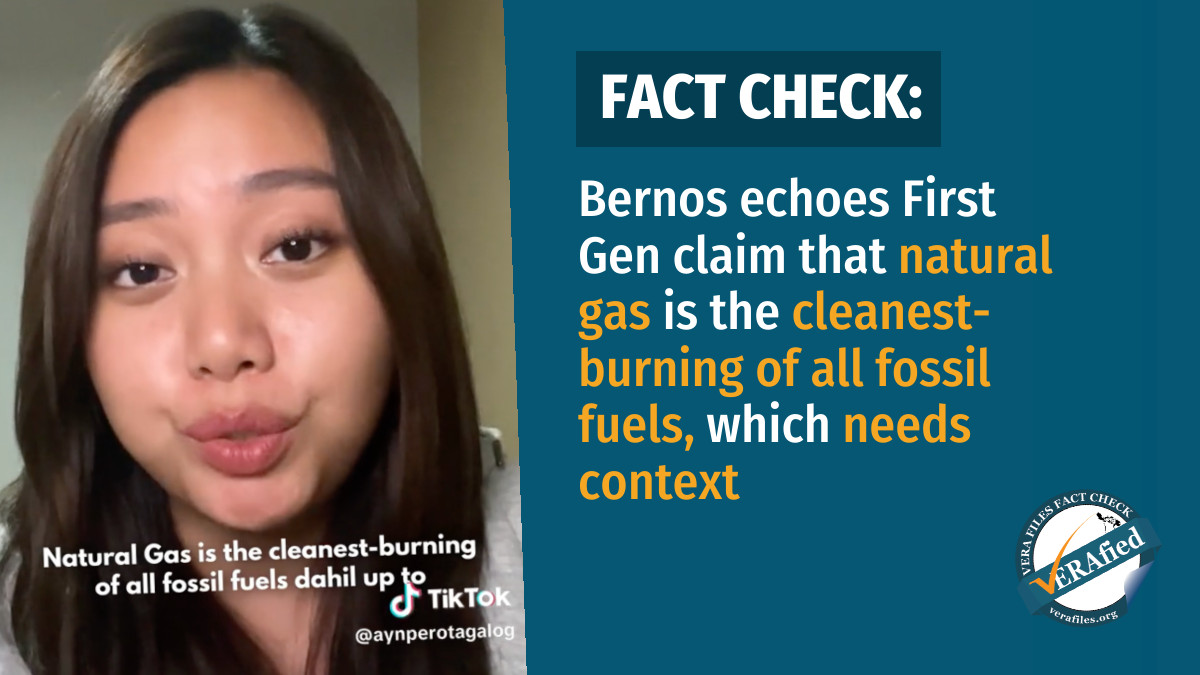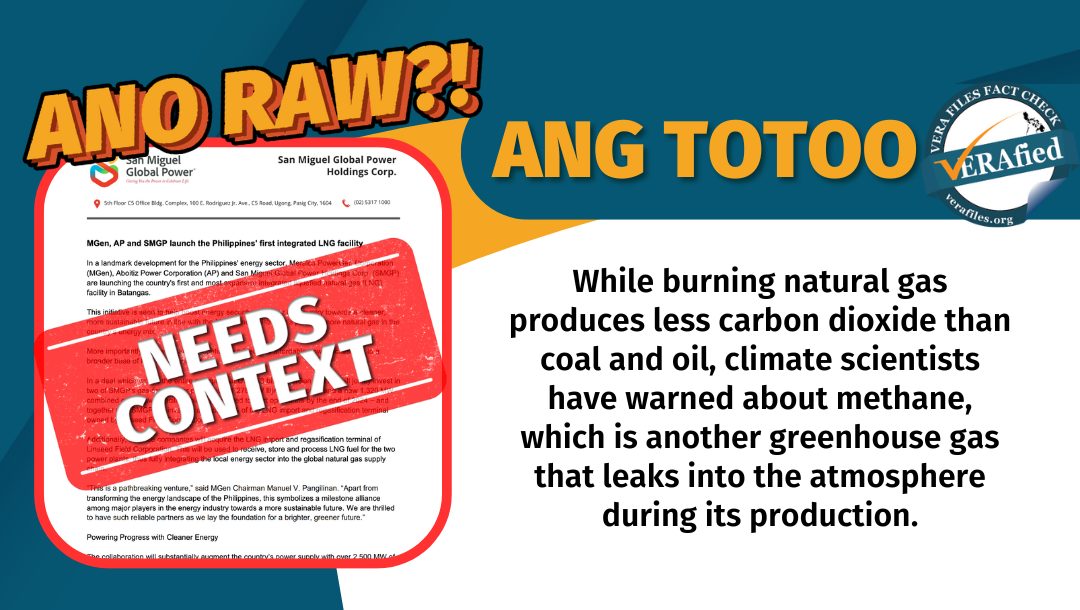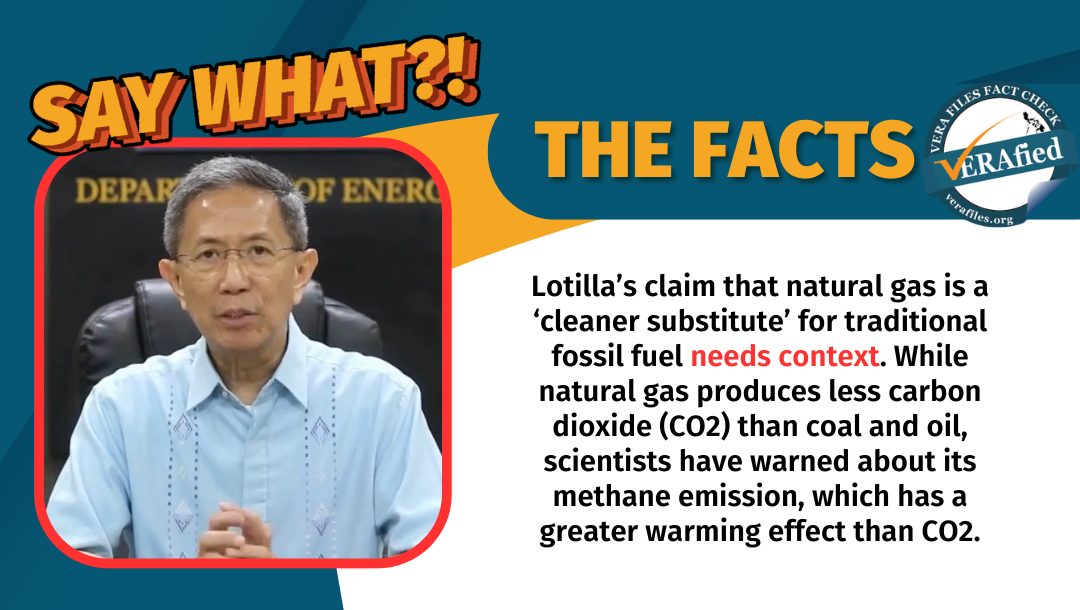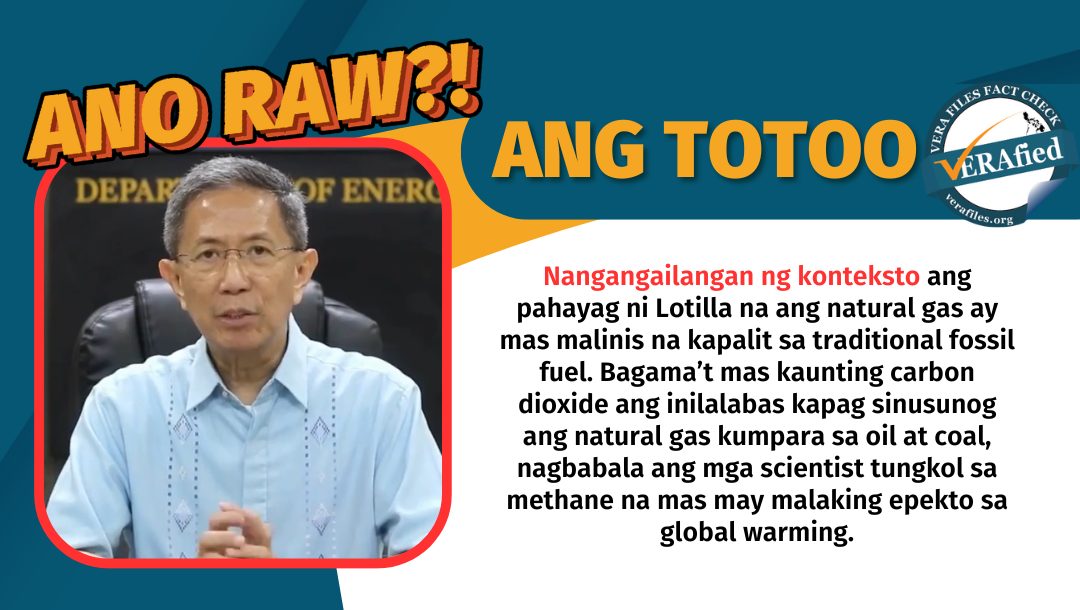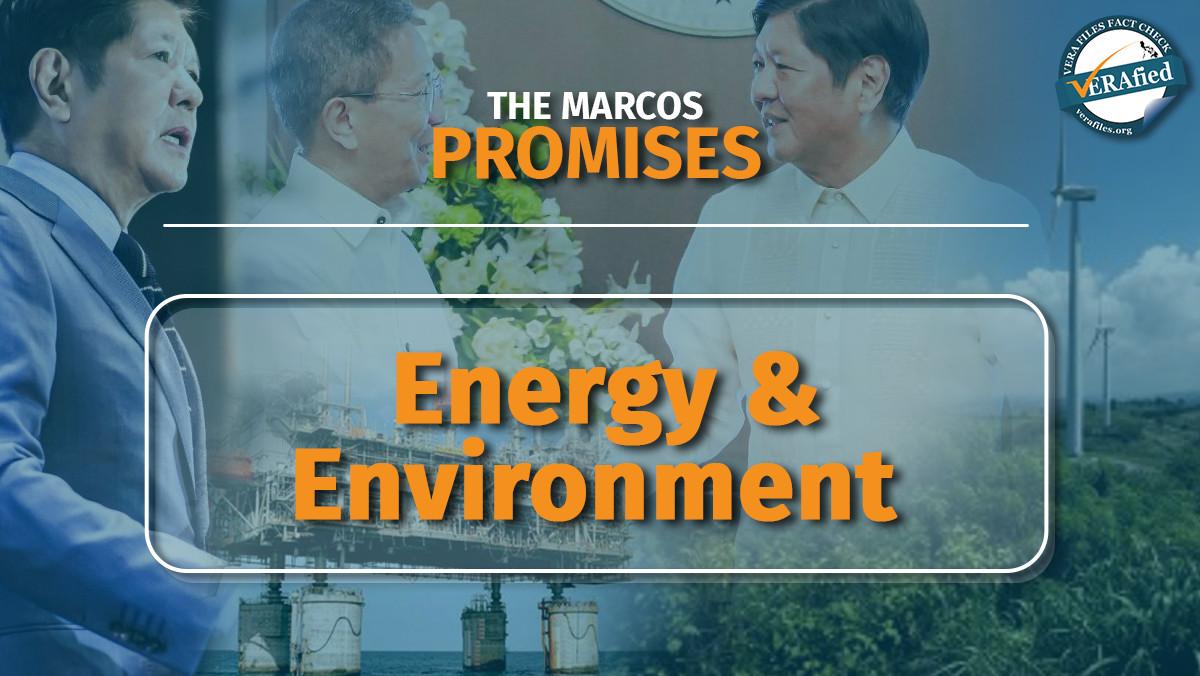On Aug. 28, social media influencer Ayn Bernos posted four TikTok videos with the #PoweredByFirstGen hashtag, claiming that natural gas is the “cleanest among all fossil fuels.” This needs context.
STATEMENT
In her videos, Bernos said:
“Natural Gas is the cleanest-burning of all fossil fuels dahil up to 60% less carbon dioxide ang nae-emit niya kumpara sa coal.”
Source: aynperotagalog TikTok page, Sa usapang climate… (archive), Aug. 29, 2023
She was repeating this claim from the web page of First Gen, a subsidiary of the Lopez-led First Philippine Holdings Corp. that produces and distributes electric power, which says:
“Natural gas is the cleanest-burning of all fossil fuels, emitting up to 60% less carbon dioxide than coal. It also does not leave behind by-products like ash, sludge, and other particulate matter that are harmful to our health and the environment.”
The hashtag “#PoweredByFirstGen” is a social media term indicating that a post is sponsored, in this case by the energy company.
FACT
According to National Grid, an energy company operating in the United Kingdom and the United States (U.S.), liquefied natural gas (LNG) produces 40% less carbon dioxide (CO2) than coal and 30% less than oil, making it the cleanest among the fossil fuels. The company also states that LNG is primarily made up of methane and is clear, odorless and colorless.
However, the United Nations Environment Programme notes that methane is a hazardous gas and is 80 times more potent at warming the Earth than CO2 over a 20-year period.
A 2018 assessment on methane emission from the oil and natural gas supply chain of the U.S. showed that the effect of high methane emissions for 20 years was comparable to the effect of the release of carbon dioxide in the atmosphere.
In the Philippines, there is an ongoing investigation by the Department of Health – Center for Health Development Calabarzon on the increase in cases of respiratory and cardiovascular diseases in Batangas City and its possible link to exposure of residents to LNG power plants.
The Global Oil & Gas Exit List, compiled by Germany-based Urgewald, has noted that terminal projects in Batangas will affect the Verde Island Passage (VIP), a marine strait separating Batangas and Mindoro, as the production of LNG can permanently damage coral polyps, reefs and marine animals. The VIP, known as the “Amazon of the oceans,” is home to over 1,700 marine species, based on a 2005 article on the marine biodiversity of the area.
The Department of Energy (DOE) has been promoting LNG as a suitable transition fuel for the country. In 2017, the department listed five considerations in developing the domestic natural gas industry: the expected drop in the natural gas supply from Malampaya, the potential of LNG to cover the projected energy demand, LNG’s power to complement renewable energy and replace diesel-based power plants and the expected non-power demand from various sectors.
Under the Philippine Energy Plan 2018-2040, the DOE “envisions the Philippines to be a [LNG] trading and trans-shipment hub in the Asia-Pacific Region.”
As of July 2023, there are seven LNG terminal projects in the country: five in Batangas City, one each in Pagbilao, Quezon and Mariveles, Bataan. A Philippine Center for Investigative Journalism report showed that LNG is neither clean, as it is a fossil fuel, nor cheap because it is subject to global market price fluctuations.
Energy Secretary Raphael Lotilla confirmed last July during an interview on ANC that LNG will have “some impact” on power prices due to the “geopolitical reshuffling” of the global market after Russia invaded Ukraine.
On Aug. 25, the DOE drafted a policy on gas aggregation scheme, which refers to blending imported LNG and the natural gas from Malampaya in hopes of lowering its price.
On Sept. 4, the Institute of Energy Economics and Financial Analysis (IEEFA), an organization that examines issues on energy market and trends, questioned the DOE’s draft of rules on natural gas. It said that these contradict the department’s promise of lowering the cost of energy. IEEFA estimated that the Philippines’ annual bill for LNG can rise to $2.5 billion, or P141 billion based on current prices.
Bernos’ videos were uploaded under her TikTok account “Teacher Ayn” that has 2.5 million followers and where she often posts English grammar tutorials. Her latest #PoweredByFirstGen video had 221.4K views as of Sept. 6.
A 2018 study on the architects of networked disinformation in the Philippines defined social media influencers or digital workers as persons “who harness their astute knowledge of social media infrastructures and pop culture vernaculars when crafting campaign messages to achieve emotional resonance with populist publics.”
